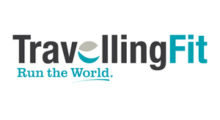
A great question. Life is busy. Training for an event can be an all-consuming enterprise that cuts in on your social life, family time, hobbies (what are they again???), oh, and that other time filler called work. so how are you supposed to add in one or two strength sessions each week? The solution is much simpler than you may think. Firstly, we need to look at what you want to achieve from your strength training. I look at strength as serving two purposes:
- Allowing you to train uninterrupted without interference from injury
- Performance benefits such as improving running economy and delaying muscular fatigue
AVOIDING INJURY
One saying that I really love is that it is better to turn up at the start line 10% undertrained than 1% overtrained. If you can complete your weekly training sessions consistently over a period of months, you will turn up at the start line in much better condition than if you had an intermittent training block disturbed by injury. That’s it, moving on.
RUNNING ECONOMY
Running economy is how much energy each foot strike costs your system. Running is expensive with energy lost as heat, and used by muscles to propel you forwards, absorb forces as you hit the ground, and simply hold your body upright against gravity. The cost of running increases as we become fatigued and start to rely on muscle fibres that are less well trained and as our running form deteriorates. Strength training helps improve your running economy by making our system (muscles and tendons primarily) more resilient against the repeated pounding of placing one foot in front of the other.
HOW MUCH BENEFIT?
As tempting as it is to say, “it depends”, I am going to put my cards on the table and offer a very specific figure. 6-12 weeks of strength training 1-2 times each week for 30 minutes can result in excess of 7.5% improvements in running economy (1). If you would like to know what this feels like, running with your hands clasped behind your back reduces your running economy by about 3% and running with your hands on your head by about 8% (2). Therefore, >7.5% is certainly not to be taken for granted! Especially towards the end of an event when you are either wishing that you hadn’t missed those three weeks with a niggly calf or that you had been a little more consistent with your one or two strength sessions each week.
“There may be no substitute for greater muscular strength when it comes to improving an individual’s performance while simultaneously reducing their risk of injury”
HOW CAN I GET STARTED???
Being a simple man, I take a simple approach that is both effective and accessible. Focus on the 2 key muscle groups that will benefit your running, your calf muscles (calves) and quadriceps (quads). Dedicate any remaining time to our other favourite muscle groups such as hamstrings (hammies), adductors (groin), gluteals (gluts), and core, but I promised you time-efficient results. Single leg calf raises are a little tedious but will pay dividends. Invest time in these over 6-12 months until the only weight that will give you the fatigue you are craving comes in the form of a leg press machine, then move on to skipping. Skipping is a fantastic, dynamic approach to strengthening those calves and serves as an excellent warm up. For our quads I would recommend squats, heavy squats. If you don’t have access to HEAVY weights, then split squats / lunges, rear-foot elevated lunges, or step ups with any load that you can hold or carry on your shoulder. Do not feel obliged to perform all the exercises listed, simply pick one for your calves and one for those quads. 4 sets to fatigue of each exercise, increasing the weight and reducing the reps over 4 weeks until you can do no more than 8 reps before needing to rest. See below table for a simple, time-efficient 12-week quads and calves program. At the RunStrong Facebook Group you can find strength training programs for at home, the gym, and the park.
RECOVERY
Strength training can leave you with heavy legs. To make sure you can apply yourself as best as possible to your strength training and your running sessions, I strongly recommend that you look after your recovery as best as possible. This means prioritising sleep and fuelling well. Following strength training, I suggest Whey Protein (add flavour) within 30-60 mins of your session. The period overnight provides another opportunity to deliver nutrients, promoting training adaptations. Including Overnight Protein (vanilla every time), 30-60 minutes before bed, further supports muscle rebuild.
| Week | Exercises | Sets & Reps |
|---|---|---|
| 1 | Calf Raises (single leg), Squats or Lunges | 2 x 12-15 |
| 2 | Calf Raises (single leg), Squats or Lunges | 3 x 12-15 |
| 3 | Calf Raises (single leg), Squats or Lunges | 3 x 10-12 |
| 4 | Calf Raises (single leg), Squats or Lunges | 3 x 8-10 |
| 5 | Calf Raises (single leg), Squats or Lunges | 4 x 8-10 |
| 6 | Calf Raises (single leg), Squats or Lunges | 4 x 8-10 |
| 7 | Calf Raises (single leg), Squats or Lunges | 4 x 8-10 |
| 8 | Calf Raises (single leg), Squats or Lunges | 4 x 8-10 |
| 9 | Calf Raises (single leg), Squats or Lunges | 4 x 8-10 |
| 10 | Calf Raises (single leg), Squats or Lunges | 4 x 8-10 |
| 11 | Calf Raises (single leg), Squats or Lunges | 4 x 8-10 |
| 12 | Calf Raises (single leg), Squats or Lunges | 4 x 8-10 |
Register for the 2019 Great Ocean Road Running Festival here.

























